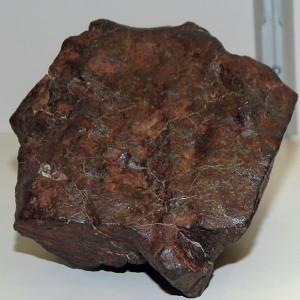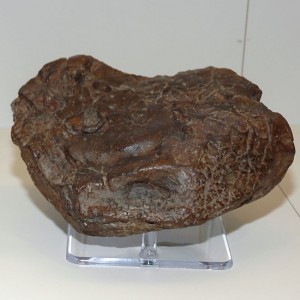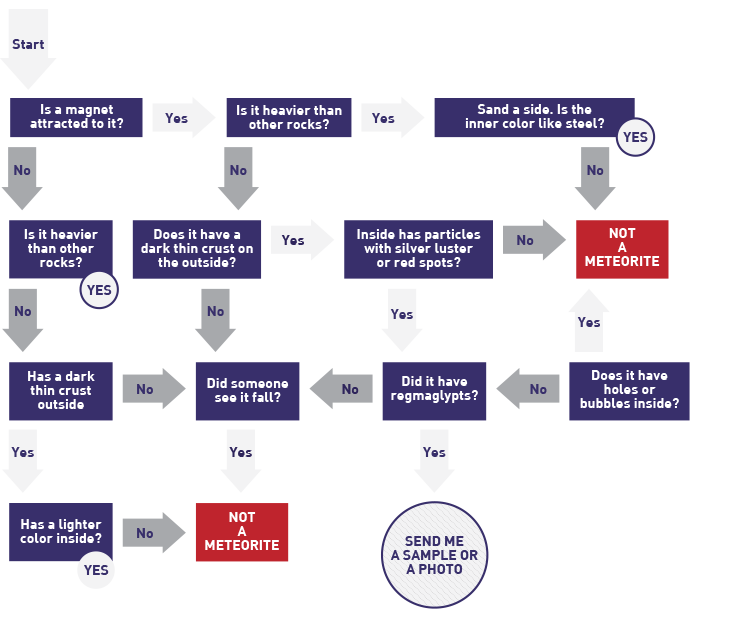Can you tell which sample in this image is a meteorite and which is a meteorwrong? Click on the image to see the results of the tests detailed below on these samples.


Meteo-RITE |
Meteor-WRONG |
| feels heavy for its size | feels heavy for its size |
| attracts a magnet | does not attract a magnet |
| leaves a weak streak | leaves a dark reddish streak |
| has regmaglypts | does not have regmaglypts |
| interior contains shiny metal grains | interior is rusty red like the outside |
| This is a stony meteorite type known as ordinary chondrite | This is a concretion made of hematite |
The image above is a great demonstration of why the staff at the Monnig Meteorite Collection and Gallery will not identify rocks from photographs. These two samples look very alike and yet one is a meteorite, and the other is a meteorwrong. There are some simple tests that can be performed that help determine if a sample might be a meteorite. These tests are usually performed together as individually they can be unreliable. Just because a sample passes all these tests does not mean it is a meteorite but it may mean it is worth having an expert examine it.
There are four easy tests that can be done on a rock sample to help determine if it is a meteorite.
-
Appearance
The appearance of a sample is a great guide as to whether a sample is a meteorite or not. Meteorites tend to have a fusion crust that is different from the interior of the meteorite. They also often have regmaglypts (thumb-print shapes) on their exterior. This is dealt with in much more detail on the Meteorite or Meteorwrong page.
-
How heavy is it?
Because most meteorites contain metal, they typically feel heavier than they should for their size. However, this test is not useful by itself as many terrestrial rocks and minerals also have this quality.
-
Streak
Hematite and Magnetite are two common minerals that form naturally on the Earth’s surface that are often confused for meteorites. They feel heavy for their size and often have a metallic sheen. Both of these minerals can be recognized using a streak test. Streak is the term used to describe the color of the streak left by a rock when it is scraped along the unglazed side of a white ceramic tile. The inside of a ceramic toilet tank cover will also work well. Meteorites leave no streak or a light grey streak if pressed hard. It is important that you test the inside of a meteorite as if the outside is rusty you will get a false result. Like most tests, it should be used with caution as many terrestrial rocks also have no streak.
Sample
Color of streak
Hematite Rust-red Magnetite Dark gray Interior of meteorite None or light grey Many other terrestrial rocks None -
Magnet test
All metallic meteorites will strongly attract a magnet and the vast majority of meteorites will attract a magnet to some degree. A metallic sample that is not magnetic is not a meteorite.
The flowchart below was adapted from Guedes et al. (2010). It is a great guide to follow to identify meteorwrongs.






